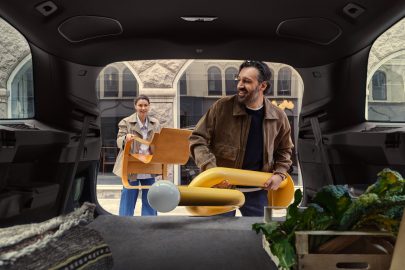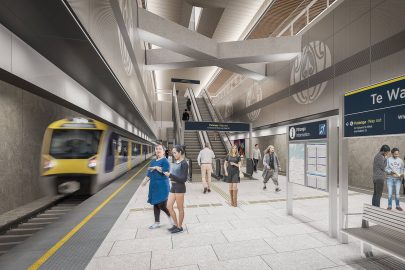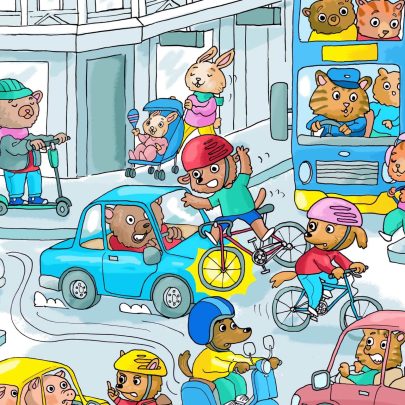Feb 19, 2015 Transport
How does this strike you? “It is our legal and moral responsibility,” said the spokesperson for Auckland Transport, “to deliver the most objective cost-efficient solutions to the ratepayers and taxpayers that planning and engineering can devise.”
Is this where we draw the dividing line — in city building, in the relationship of civics and commerce, in how we think of ourselves? Between those who believe it is the duty of public servants to deliver cost-efficient solutions, end of story, and those who believe other factors — heritage, quality of life, future-proofing, improving the city for those who come after us — should also be part of that duty?
It’s not an idle question. AT, a council organisation, defining its role narrowly, proposes to cut down mature pohutukawa trees on Great North Rd that were planted by the council back when councillors clearly had a broader view of their duties. You can read both sides of the argument here.
Those trees are not the only focus for this debate. Ports of Auckland Ltd (POAL), another council outfit, perseveres with its desire to reclaim more of the harbour and the council seems insipidly unable to stop it. In fact, POAL’s plan doesn’t even meet the cost-efficiency measure: it will help the company to make money, sure, but allowing the port operations to expand is far from the most cost-effective way to use that waterfront land.
The larger question, of how we want the city waterfront and port area to develop, for the good of the whole city — economically, recreationally and every other way — seems beyond the council to address. The mayor, in fact, even left town rather than cast a vote on the reclamation.
We’ve become fond in this city of patting ourselves on the back for our newfound confidence in the place. Yet despite all the good things that undoubtedly are happening (guest columnist Elle Hunt has some welcome things to say on that in the new issue), we are also now at risk. “Cost-efficiency” stands in the way of enlightened planning; political timidity threatens outright sabotage.
More examples? The proposed SkyPath, a walking and cycling way to be slung beneath the harbour bridge. Residents on both sides of the bridge fear their suburbs will be overrun by visitors looking for somewhere to park. It’s a reasonable worry. But it beggars belief that there has not been the political will at council to solve the problem. Inadequate car-park planning is preventing the construction of a much-needed walking and cycling amenity? Do they know how absurd that sounds?
There’s a bigger example of the potential for damage when timid politicians hide behind disputes over money. It’s the SkyCity convention centre.
Now the government has rightly decided not to contribute to the cost of building the centre, SkyCity is considering its options. Elsewhere in the March Metro, Matthew Hooton discusses the financial implications and urban design columnist Chris Barton has analysed the existing designs, by architects Warren and Mahoney.
SkyCity says those designs would create a cost overrun of perhaps $150 million. The big question now: will it scale back the project in a way that compromises its quality?
Nigel Morrison, SkyCity CEO and therefore one of the key people who must sign off on the design, calls even the current plan “good but not great”. The Prime Minister has mused aloud that a funding shortfall might lead to it being an “eyesore”.
Already, as has been widely commented, the centre’s design has some aesthetic failures. It looms bleakly over Nelson St — a street desperately in need of relief from bleakness. There’s a “laneway” running through it, but it lacks the repurposed heritage character of a real laneway, without presenting any modernist design delights instead.
Most surprisingly, the external appearance of the complex seems devoid of the distinct New Zealand character called for in the original brief (there’s nothing, say, to match the magnificent vaulted kauri verandahs of the Auckland Art Gallery). It’s anonymous big-box architecture.
Let’s put a stake in the ground about this. Cost restrictions or no, the possibility that the convention centre will not be a great building cannot be allowed to stand.
It’s not acceptable to say there isn’t enough money, or that when a building is this big it’s hard not to make it just a box. In fact, when a building is this big it’s vital to overcome that problem.
Our biggest buildings should be our best. That’s the spirit in which 20th century New York was built, and the Beijing Olympic facilities and downtown Shanghai today, and London’s Houses of Parliament in the 19th century and St Paul’s in the 17th. In cities that believe in themselves, it has always been true. Our biggest should be our best.
Morrison’s “good but not great” isn’t good enough. SkyCity has just been handed a chance to do something special. What are the odds they’ll rise to it?





